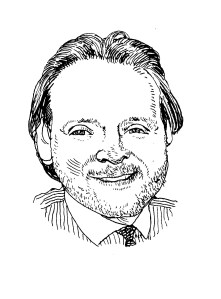 As has been the case for more than a century, the Manhattan submarket is once again leading the city out of a real estate downturn. When markets recover, typically the best properties, in the best locations, show positive trends well before secondary and tertiary properties and locations do. And by almost any metric, the Manhattan investment sales market is trending positively.
As has been the case for more than a century, the Manhattan submarket is once again leading the city out of a real estate downturn. When markets recover, typically the best properties, in the best locations, show positive trends well before secondary and tertiary properties and locations do. And by almost any metric, the Manhattan investment sales market is trending positively.
In the fourth quarter of 2010 (4Q10), we saw a tremendous spike in the dollar volume of sales in the city as banks and special servicers were trying to clean up balance sheets by the end of the year, and discretionary sellers were acting to beat what they thought would be an increase in the federal capital-gains tax rate. This tremendous activity was particularly prevalent in Manhattan. (For this analysis, we consider the Manhattan submarket to consist of properties south of 96th Street on the East Side and south of 110th Street on the West Side). Of the $5.6 billion in 4Q10 sales volume, $4.9 billion of it was in Manhattan.
Given the externalities that created this elevated level of sales volume in 4Q10, we projected that sales volume would fall significantly in the first quarter of 2011 (1Q11), as these factors tend to “steal” activity from future periods. We saw the same thing happen to auto sales, which spiked during the cash-for-clunkers program and then plummeted afterward. This spike/plunge dynamic also occurred in the U.S. housing market during and after the tax credit program for first-time home buyers.
In accordance with our projections, 1Q11 dollar volume of sales did fall from 4Q10 levels but, surprisingly, they did not fall by as much as we anticipated. In 1Q11, the dollar volume of sales hit $3.9 billion citywide, down 30 percent from the $5.6 billion in 4Q10. The $3.9 billion was, however, the second-best quarter since 3Q08. Not surprisingly, the majority of this volume occurred in the Manhattan submarket-$3.1 billion of the $3.9 billion, in fact.
The good news for the Manhattan submarket is that 1Q11 activity was not as suppressed as we anticipated, which bodes extraordinarily well for the balance of the year. What is even better is that the psychology of participants in the marketplace is very positive based upon this level of activity, which is well below the history trend line.
While the $3.1 billion in Manhattan sales felt great and was the second-best quarter since 3Q08, it is only a fraction of the activity we had become accustomed to in 2005 through 2008. During this four-year period, the average quarterly dollar volume of sales was in excess of $8 billion. Some people do not think we will get back to that level of activity. We don’t agree. Still, we believe the market has a long way to go.
THE DOLLAR VOLUME of sales has been on an upward trend. After a record $52.5 billion in 2007, volume fell to just $4.2 billion in 2009. In 2010, volume approached $12 billion, nearly triple the depressed 2009 total.
We track the number of properties sold more closely than the dollar volume, as a few very large transactions can skew the dollar volume significantly. The number of properties sold has also been on an upswing, but much less dramatically than dollar volume. In the Manhattan submarket, there were 137 properties sold in 1Q11, up 10 percent from the 125 properties sold in 4Q10. This was the highest quarterly total going back to 3Q08. In 2007, at the peak of the market, there were 999 properties sold in Manhattan. This figure dropped to 322 in 2009, and then increased to 473 in 2010. This year will surely exceed 2010 totals. If we annualize 1Q11 sales, the market is running toward 548 properties sold for this year.
If you are a frequent reader of Concrete Thoughts, you know that we particularly like to look at the turnover volume ratio, which is the number of properties sold as a percentage of the total stock of properties in the submarket.
In Manhattan, we have 27,649 properties in our statistical sample. Going back to 1984, the average turnover of this stock has been 2.6 percent per year, or about 720 property sales per year. The lowest turnover ratio we had ever seen, prior to 2009, was 1.6 percent, which occurred in 1992 and again in 2003. These were both years at the end of recessionary periods and were also years in which we hit peaks in cyclical unemployment.
A new record was set in 2009, when the turnover ratio plummeted to 1.17 percent. In 2010, the ratio rose to 1.7 percent, and if we annualize the activity in 1Q11, the ratio is running at about 2 percent. We expect this upward trend to continue toward the long-term average over the next year or two.
The average price of a property sold in the Manhattan submarket dipped slightly in 1Q11 from 2010 levels. In 1Q11, the average price of a property sold was $22.4 million, down from $25.3 million in 2010. The $22.4 million average was slightly less than double the $12.9 million average in 2009. For perspective, the average price was $52.2 million in 2007. While these averages provide some insight, they have little to do with the relative level of value.
The perception of value in the Manhattan submarket was that 2010 values increased from 2009 levels. They did not. Institutional, or “core,” assets did indeed see value increases in 2010 over 2009 levels. Citywide, however, there were only 49 properties sold in 2010 at a price of $50 million or more, out of 1,667 total properties sold. These core assets, widely reported on by the media, did increase in value, but they represented only about 3 percent of the market. Generally, values fell on a price per-square-foot basis in 2010 versus 2009.
The good news in this statistic is that the rate of decline in Manhattan slowed significantly throughout the year, and we expect to see values increase, across the board, in New York City’s leading submarket this year. The average values per square foot for 1Q11 support this position. We don’t like to draw value conclusions based upon less than a half-year’s data (especially when the number of total data points is low), but of 10 asset classes we track in Manhattan, seven saw increases in average prices per square foot. By year’s end, we expect all 10 asset classes to have appreciated over 2009 levels.
OUR PROJECTIONS for 2011 values include a forecast of a 12 percent average increase in value per square foot. Of all asset classes, we expect the retail sector to perform best, as we anticipate a 30 percent increase here. The development market is gaining significant traction, and we expect the number of transactions in this sector to be up substantially over 2010 levels. Office building fundamentals are improving, and double-digit appreciation in value per square foot should be a no-brainer.
Perhaps most interestingly, in the multifamily sector, buyers are once again underwriting apartment buildings for condominium conversion. The “rental only” mentality lasted what seems like a nano-second, and even residential land is being underwritten for condo construction again.
Based upon all of this data, we expect 2011 to be a great year for the Manhattan submarket. Volume will increase both in terms of dollars and number of properties sold, and values will appreciate as Manhattan leads the city out of this recent downturn. As this happens, Manhattan should pull the boroughs along with it, which will have a stabilizing impact on outer-borough fundamentals.
Robert Knakal is the chairman and founding partner of Massey Knakal Realty services and in his career has brokered the sale of more than 1,125 properties, having a market value in excess of $7 billion.


